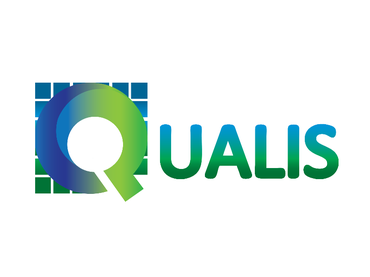UNVEILING THE USE OF SCIENTIFIC TERMS IN SHAMPOOS
POSSIBILITIES FOR TEACHING ORGANIC CHEMICAL SUBSTANCES
Visualizações: 279DOI:
https://doi.org/10.56579/rei.v6i4.1072Keywords:
Scientific culture, Chemistry, Dermatology, labelsAbstract
Interpreting scientific terms on industrialized product labels is a complex task, requiring the ability to relate scientific concepts to their practical application. However, this challenging exercise plays a crucial role in encouraging a broader reflection on the presence of science in the social context. In this context, this study aims to analyze the coherence of scientific terms on shampoo labels and propose pedagogical strategies that can contribute to the development of science teaching oriented towards a critical perspective. To achieve this, we chose to adopt an exploratory qualitative methodological approach. We analyzed the terms salicylic acid, piroctone olamine, wheat protein, coconut oil and panthenol. To support our analysis, we used information from scientific articles evaluating the effectiveness of these components in solving hair problems such as seborrheic dermatitis and psoriasis. At the end of this study, we present proposals that aim to foster a critical approach to scientific knowledge, enabling students to understand the products in question and the science behind them.
Downloads
References
BRASIL. Ministério da Educação. Base Nacional Comum Curricular. Brasília: MEC, 2018.
CAMPOS, S.; DOXEY, J.; HAMMOND, D. Nutrition labels on pre-packaged foods: a systematic review. Public Health Nutrition, v. 14, n. 8, p. 1496-1506, 2011. DOI: https://doi.org/10.1017/S1368980010003290
CORREIA, D. et al. Análise de uma proposta didática sobre o tema Xampu em aulas de Química no Ensino Médio. In: ENCONTRO NACIONAL DE PESQUISA EM EDUCAÇÃO EM CIÊNCIAS, 9., 2014, São Paulo. Anais [...]. São Paulo: UFMT, 2014.
DELIZOICOV, D.; ANGOTTI, J. A.; PERNAMBUCO, M. M. C. A. Ensino de Ciências: fundamentos e métodos. São Paulo: Cortez, 2002.
GIL, A. C. Métodos e técnicas de pesquisa social. São Paulo: Atlas, 2008.
GRUNERT, K. G.; WILLS, J. M.; FERNÁNDEZ-CELEMÍN, L. Nutrition knowledge, and use and understanding of nutrition information on food labels among consumers in the UK. Appetite, v. 55, n. 2, p. 177-189, 2010. DOI: https://doi.org/10.1016/j.appet.2010.05.045
KOTTARIDI, E.; SKORDOULIS, K. Critical science education and its pedagogical practice. In: INTERNATIONAL CONFERENCE ON CRITICAL EDUCATION “CRITICAL EDUCATION IN THE ERA OF CRISIS”, 4., 2015, Thessaloniki. Proceedings […].Thessaloniki: Aristotle University of Thessaloniki, 2015.
LUCA, A. G. O ensino de Química nas leituras de embalagens/rótulos. São Paulo: Livraria da Física, 2015.
MONTEIRO, I. B.; OLIVEIRA, C. L. R.; GEREMIAS, B. M. A experimentação problematizadora e o ensino de ciências: desafios e perspectivas na educação do campo. Kiri-Kerê-Pesquisa em Ensino, v. 2, n. 4, p. 263-283, 2020. DOI: https://doi.org/10.47456/krkr.v2i4.31902
MOORE, S. G. et al. Effect of educational interventions on understanding and use of nutrition labels: A systematic review. Nutrients, v. 10, n. 10, p. 1432, 2018. DOI: https://doi.org/10.3390/nu10101432
MOHER, D. et al. Preferred reporting items for systematic reviews and meta-analyses: the PRISMA statement. International Journal of Surgery, v. 8, n. 5, p. 336-341, 2010. DOI: https://doi.org/10.1016/j.ijsu.2010.02.007
MURIMI, M. W. Healthy literacy, nutrition education, and food literacy. Journal of Nutrition Education and Behavior, v. 45, n. 3, p. 195, 2013. DOI: https://doi.org/10.1016/j.jneb.2013.03.014
NEVES, J. L. Pesquisa qualitativa: características, usos e possibilidades. Caderno de Pesquisas em Administração, v. 1, n. 3, p. 1-5, 1996.
PARANÁ. Secretaria do Estado de Educação. Referencial Curricular do Paraná: princípios, direitos e orientações. Curitiba: SEED, 2018.
SASSERON, L. H. Ensino de ciências por investigação e o desenvolvimento de práticas: uma mirada para a base nacional comum curricular. Revista Brasileira de Pesquisa em Educação em Ciências, v. 18, n. 3, p. 1061-1085, 2018. DOI: https://doi.org/10.28976/1984-2686rbpec20181831061
SIEGEL, H. The rationality of science, critical thinking, and science education. Synthese, v. 80, p. 9-41, 1989. DOI: https://doi.org/10.1007/BF00869946
TAL, T.; KEDMI, Y. Teaching socioscientific issues: Classroom culture and students’ performances. Cultural Studies of Science Education, v. 1, n. 4, p. 615-644, 2006. DOI: https://doi.org/10.1007/s11422-006-9026-9
TEIXEIRA, P. M. M. Educação científica e movimento CTS no quadro das tendências pedagógicas no Brasil. Revista Brasileira de Pesquisa em Educação em Ciências, v. 3, n. 1, p. 88-102, 2003.
Downloads
Published
How to Cite
Issue
Section
License
Copyright (c) 2024 Interdisciplinary Studies Journal

This work is licensed under a Creative Commons Attribution 4.0 International License.
The Journal of Interdisciplinary Studies adopts the Creative Commons Attribution 4.0 International License (CC BY 4.0), which allows for sharing and adapting the work, including for commercial purposes, provided proper attribution is given and the original publication in this journal is acknowledged.













